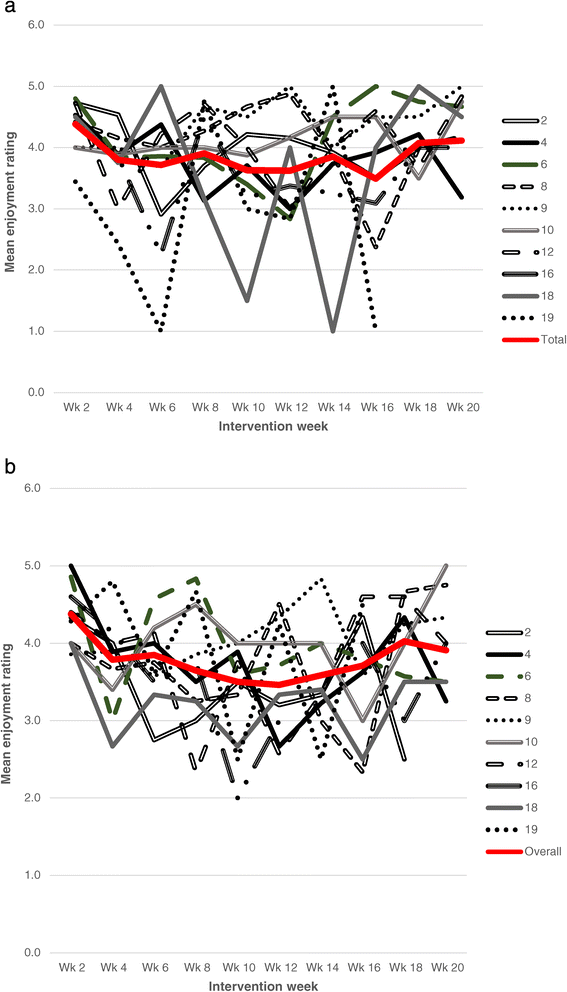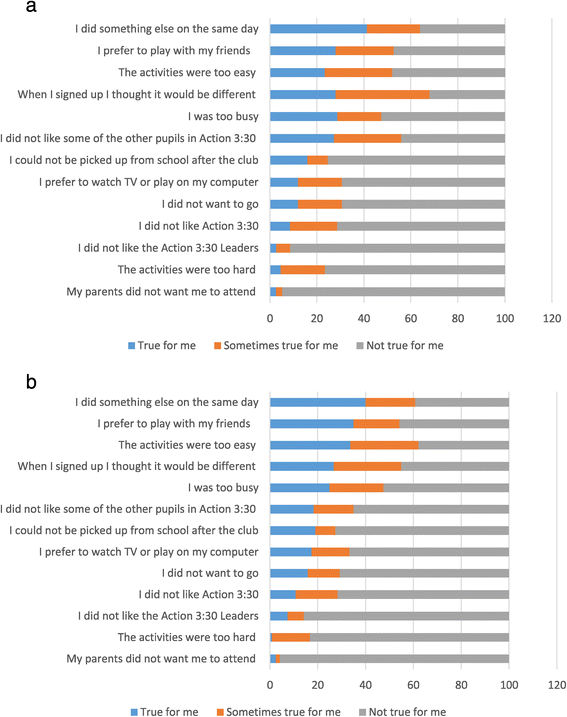Increasing children's physical activity through a teaching-assistant led extracurricular intervention: process evaluation of the action 3:30 randomised feasibility trial
- PMID: 25879810
- PMCID: PMC4340639
- DOI: 10.1186/s12889-015-1501-3
Increasing children's physical activity through a teaching-assistant led extracurricular intervention: process evaluation of the action 3:30 randomised feasibility trial
Abstract
Background: Many children do not engage in recommended levels of physical activity (PA), highlighting the need to find ways to increase children's PA. Process evaluations play an important role in improving the science of randomised controlled trials. We recently reported the results of the Action 3:30 cluster randomised feasibility trial illustrating higher levels of moderate to vigorous intensity PA among boys but not girls. The aim of this paper is to report the process evaluation results including intervention fidelity, implementation, context and how intervention components and trial design could be improved before proceeding to a definitive RCT.
Methods: Children's session enjoyment was assessed every two weeks. Reasons for non-attendance were provided by questionnaire at the end of the intervention. Post intervention interviews were held with participating teaching assistants (TAs) and school key contacts (KCs), and focus groups were conducted with children in all 10 intervention schools. Interviews and focus groups examined how recruitment and session attendance might be improved and established which elements of the programme that were and were not well received.
Results: Data indicated good intervention fidelity with TA's adopting enjoyment-focussed teaching styles and the sessions improving children's skills and self-esteem. Several positive aspects of implementation were identified, including high session variety, the opportunity to work in teams, the child-led sessions and the engaging leader style. In terms of context there was evidence that TA's faced difficulties managing challenging behaviour and that further training in this area was needed. TAs and KCs felt that recruitment could be improved by providing taster sessions during PE lessons and clarifying the days that the clubs would run at the point of recruitment. The programme could be improved to enhance interest for girls, by including training for managing disruptive behaviour and making some activities more age-group appropriate.
Conclusions: Action 3.30 showed promise but could be improved by ensuring age appropriate activities, providing more appeal to girls and improving recruitment through taster sessions and early establishment of days of the week it is to be offered on.
Trial registration: ISRCTN58502739.
Figures


References
-
- Department of Health (UK) Start Active, Stay Active: A report on physical activity from the four home countries’ Chief Medical Officers. London: Department of Health; 2011. pp. 1–59.
Publication types
MeSH terms
Associated data
Grants and funding
LinkOut - more resources
Full Text Sources
Other Literature Sources
Medical

